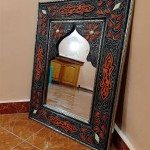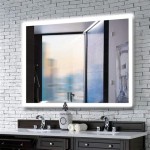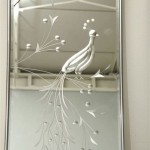Mirroring a Macbook Pro to a Samsung Smart TV
Connecting a Macbook Pro to a Samsung Smart TV offers a larger display for various activities, from enjoying multimedia content to delivering presentations. Several methods facilitate this screen mirroring, each with its own advantages and disadvantages.
AirPlay 2: The Wireless Approach
For newer Samsung Smart TVs (2018 and later models) that support AirPlay 2, wireless mirroring is straightforward. Ensure both the Macbook Pro and the TV are connected to the same Wi-Fi network. On the Macbook Pro, click the AirPlay icon in the menu bar (it resembles a rectangle with a triangle pointing upwards). Select the Samsung TV from the list of available devices. The Macbook Pro's display will then be mirrored on the television.
AirPlay 2 offers a convenient cable-free experience, ideal for streaming videos, photos, and music. The quality of the mirroring is generally high, provided the Wi-Fi network is stable. However, network congestion can introduce latency or occasional buffering, particularly with high-bandwidth content like 4K video.
HDMI Connection: Wired Stability
A wired connection using an HDMI cable provides a reliable and stable mirroring solution. Connect one end of the HDMI cable to the HDMI port on the Macbook Pro (using an adapter if necessary, such as a USB-C to HDMI adapter) and the other end to an available HDMI port on the Samsung Smart TV. Select the corresponding HDMI input source on the television using the remote control.
The HDMI connection delivers the highest possible quality, supporting resolutions up to 4K and beyond, depending on the capabilities of both the Macbook Pro and the TV. Latency is minimal, making this method suitable for activities requiring precise timing, such as gaming or using professional video editing software. The primary drawback is the need for a physical cable, which can limit placement flexibility.
Third-Party Apps for Screen Mirroring
Several third-party applications offer screen mirroring functionality. These apps often utilize existing network connections (Wi-Fi or Ethernet) to transmit the display signal from the Macbook Pro to the Samsung Smart TV. Examples include AirBeamTV, Mirror for Samsung TV, and LetsView. These applications may provide additional features, such as specific device compatibility or customized streaming settings.
When considering third-party apps, research their compatibility with specific Macbook Pro and Samsung TV models. Performance can vary based on network conditions and app optimization. Some apps offer free trials, while others require a one-time purchase or subscription.
Troubleshooting Common Issues
Occasionally, users may encounter problems when attempting to mirror their Macbook Pro to a Samsung Smart TV. A common issue is the inability to locate the TV on the network. Ensure both devices are on the same Wi-Fi network and that the TV's AirPlay setting (if applicable) is enabled. Restarting both devices can sometimes resolve connection issues.
If using an HDMI cable, ensure the cable is securely plugged into both devices. Try a different HDMI port on both the Macbook Pro (with the appropriate adapter) and the TV. A faulty HDMI cable can also cause connectivity problems.
Audio issues can arise when the sound output is not correctly configured. Check the sound settings on the Macbook Pro and ensure the Samsung TV is selected as the output device. For HDMI connections, audio is typically transmitted through the HDMI cable itself.
Optimizing the Mirroring Experience
For an optimal viewing experience, adjust the display settings on the Macbook Pro to match the resolution of the Samsung Smart TV. This ensures the mirrored image appears sharp and clear. The display settings can be accessed through System Preferences.
Consider the viewing environment when mirroring. Ambient light can affect image quality, particularly with glare on the TV screen. Adjusting the room lighting or the TV's picture settings can improve visibility.
When using wireless mirroring methods, minimizing network congestion can improve performance. Close unnecessary applications and devices using the network. Positioning the Macbook Pro closer to the Wi-Fi router can also strengthen the signal and reduce latency.
Selecting the appropriate mirroring method depends on individual needs and the capabilities of the available hardware. AirPlay 2 offers a convenient wireless solution, while HDMI provides a reliable wired connection. Third-party apps provide alternative options with varying features. By understanding the advantages and disadvantages of each method, users can achieve a seamless and enjoyable screen mirroring experience.

How To Screen Mirror Mac Samsung Tv Step By Guide

Diffe Apps For Screen Mirroring Mac To Samsung Tv

How To Screen Mirror Macbook Samsung Tv

14 Fixes For Screen Mirroring Mac To Samsung Tv Not Working Techwiser

How To Mirror Macbook Samsung Smart Tv

6 Ways How To Mirror Your Macbook Samsung Tv

How To Screen Mirror Mac Samsung Tv Step By Guide

Mirror Macos And Samsung Tv Using Airplay 2

Screen Mirror To Samsung Tv Android Mac Ios Free App

How To Use Samsung Smart View Screen Mirror Android Devices








